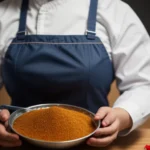If you’re looking to add some flavor and excitement to your kitchen, why not try incorporating delicious Arab recipes into your cooking repertoire? Arab cuisine is known for its bold and exotic flavors, aromatic spices, and rich textures that will surely spice up your meals and leave your taste buds tingling with delight. In this article, we will explore the diverse and delicious world of Arab cuisine, and how you can easily incorporate these mouth-watering dishes into your daily cooking routine.
1. Introduction to Arab Cuisine
Arab cuisine is a diverse and dynamic culinary tradition that spans across the Middle East and North Africa. It is characterized by the use of fresh ingredients such as vegetables, fruits, grains, and meats, as well as aromatic spices and herbs that lend depth and complexity to each dish. Commonly used spices in Arab cuisine include cumin, coriander, cinnamon, cardamom, and sumac, which give the dishes their distinctive flavor profiles.
2. The Importance of Spices in Arab Cuisine
Spices play a crucial role in Arab cuisine, as they are used to enhance the natural flavors of the ingredients and create a balance of sweet, savory, and tangy tastes. Spices such as cumin, cardamom, and cloves are often used to season meats and stews, while cinnamon and nutmeg are used in sweet dishes such as desserts and pastries. By learning how to use these spices effectively, you can create a wide range of delicious Arab dishes that will impress your family and friends.
3. Popular Arab Dishes to Try
Some of the most popular Arab dishes that you can try at home include hummus, falafel, kebabs, shawarma, tabbouleh, and baklava. Hummus is a creamy dip made from mashed chickpeas, garlic, lemon juice, and tahini, while falafel is a deep-fried patty made from ground chickpeas and herbs. Kebabs are skewered meats that are grilled to perfection, while shawarma is a type of sandwich made from thinly sliced meat that is marinated and roasted.
4. How to Make Hummus
To make hummus at home, you will need the following ingredients: 1 can of chickpeas, drained and rinsed; 2 cloves of garlic, minced; 2 tablespoons of tahini; 2 tablespoons of lemon juice; 1/4 cup of olive oil; and salt and pepper to taste. Simply blend all the ingredients in a food processor until smooth and creamy, and serve with pita bread or fresh vegetables for a delicious and healthy snack.
5. Tips for Making Perfect Falafel
To make perfect falafel at home, start by soaking dried chickpeas overnight in water to soften them. Drain the chickpeas and blend them with garlic, onions, parsley, cumin, coriander, and salt until you have a coarse paste. Form the mixture into small patties and fry them in hot oil until golden brown and crispy. Serve the falafel with tahini sauce, pickles, and flatbread for a satisfying and flavorful meal.
6. The Art of Making Tabbouleh
Tabbouleh is a refreshing and light salad made from bulgur wheat, tomatoes, cucumbers, parsley, mint, and lemon juice. To make tabbouleh, soak bulgur wheat in hot water until softened, then mix it with chopped vegetables and herbs. Season the salad with lemon juice, olive oil, salt, and pepper, and let it marinate in the fridge for a few hours before serving. Tabbouleh is a great side dish to accompany grilled meats or kebabs.

7. The Secret to Perfect Kebabs
Kebabs are a popular Arab dish made from marinated meats that are skewered and grilled to perfection. To make kebabs at home, start by marinating your choice of meat (such as chicken, beef, or lamb) in a mixture of yogurt, garlic, lemon juice, and spices for at least a few hours or overnight. Thread the marinated meat onto skewers and grill them over high heat until cooked through and charred on the outside. Serve the kebabs with rice, salad, and pita bread for a complete and satisfying meal.
8. Sweet Endings with Baklava
Baklava is a sweet and decadent pastry made from layers of phyllo dough, nuts, honey, and spices. To make baklava at home, start by layering sheets of phyllo dough with a mixture of finely chopped nuts (such as pistachios, walnuts, or almonds) and spices. Brush each layer with melted butter and bake the baklava until golden brown and crispy. Pour a mixture of honey and sugar over the hot baklava and let it soak in before serving. Baklava is a rich and indulgent dessert that is perfect for special occasions and celebrations.
9. Tips for Cooking Arab Dishes at Home
When cooking Arab dishes at home, it is important to use fresh and high-quality ingredients to achieve the best flavors and textures. Take the time to properly marinate meats, soak grains, and chop vegetables to ensure that each dish is full of flavor and aroma. Experiment with different spices and herbs to create your own unique twist on classic Arab recipes, and don’t be afraid to get creative in the kitchen.
10. Where to Find Authentic Arab Ingredients
To cook authentic Arab dishes at home, you may need to source some specialty ingredients that are used in Arab cuisine. You can find these ingredients at specialty grocery stores, Middle Eastern markets, or online retailers that sell Arab spices, herbs, grains, and condiments. Some of the essential ingredients to have in your pantry include sumac, za’atar, harissa paste, pomegranate molasses, and rose water, which are commonly used in Arab cooking.
11. Hosting an Arab-Inspired Dinner Party
If you’re looking to wow your guests with a unique and flavorful dining experience, consider hosting an Arab-inspired dinner party. Create a menu of traditional Arab dishes such as meze platters, grilled meats, salads, and desserts, and serve them family-style for a communal and interactive meal. Decorate your table with colorful linens, plates, and serving dishes, and play traditional Arab music to set the mood for an unforgettable dining experience.
12. Incorporating Arab Cuisine into Your Weekly Meal Plan
To incorporate Arab cuisine into your weekly meal plan, start by selecting a few recipes that you want to try and make a shopping list of the ingredients you will need. Plan your meals ahead of time and prep ingredients in advance to save time and effort during the week. Experiment with different Arab dishes and flavors to keep your meals exciting and diverse, and don’t be afraid to try new ingredients and techniques to expand your culinary skills.
13. Healthy Eating with Arab Recipes
Arab cuisine is known for its emphasis on fresh and healthy ingredients, making it a great choice for those looking to eat clean and nutritious meals. Many Arab dishes are naturally plant-based, gluten-free, and dairy-free, which makes them suitable for a wide range of dietary preferences and restrictions. By incorporating more Arab recipes into your diet, you can enjoy flavorful and satisfying meals that are good for your body and your taste buds.
14. Exploring the World of Arab Street Food
Arab street food is a vibrant and exciting culinary tradition that is enjoyed by locals and tourists alike in the bustling markets and streets of the Middle East and North Africa. Some popular Arab street foods include falafel sandwiches, shawarma wraps, manakish (flatbreads), and kanafeh (sweet pastries). If you ever have the chance to visit an Arab country, be sure to explore the local street food scene and try these delicious and portable dishes for a truly authentic dining experience.
15. Conclusion
In conclusion, Arab cuisine is a rich and flavorful culinary tradition that offers a wide variety of delicious dishes and flavors to explore. By incorporating Arab recipes into your cooking routine, you can spice up your meals and introduce your family and friends to the exotic and aromatic world of Middle Eastern and North African cooking. Whether you’re a seasoned home cook or a novice in the kitchen, there are plenty of easy and accessible Arab recipes that you can try at home to impress and delight your taste buds. So why not add some spice to your kitchen with delicious Arab recipes today?
FAQs about “Spice Up Your Kitchen with Delicious Arab Recipes”
- What sets “Spice Up Your Kitchen with Delicious Arab Recipes” apart from other recipe books? This book offers a unique collection of Arab recipes that not only tantalize the taste buds but also showcase the rich culinary heritage and diverse flavors of Arab cuisine.
- Which Arab regions are represented in this recipe book? “Spice Up Your Kitchen with Delicious Arab Recipes” features recipes from various Arab regions, including the Levant (Syria, Lebanon, Jordan, Palestine), North Africa (Morocco, Algeria, Tunisia), the Arabian Peninsula (Saudi Arabia, UAE, Qatar), and beyond.
- Are the recipes in this book suitable for all skill levels? Yes, the recipes in this book are designed to cater to a wide range of skill levels, from beginner cooks to seasoned chefs. Each recipe includes clear instructions and easy-to-find ingredients to ensure success in the kitchen.
- How does this book incorporate spices and herbs to enhance flavor in Arab cuisine? This book explores the essential role of spices and herbs in Arab cuisine, showcasing how they are used to add depth, aroma, and complexity to dishes. Readers will learn about popular spices like cumin, coriander, cinnamon, and sumac, as well as aromatic herbs like parsley, mint, and cilantro.
- Can readers expect to find both traditional Arab recipes and modern interpretations in this book? Absolutely! “Spice Up Your Kitchen with Delicious Arab Recipes” offers a blend of traditional Arab recipes passed down through generations and modern interpretations that reflect contemporary culinary trends. Whether you’re craving classic dishes or looking for innovative twists, this book has something for everyone.
Advantages:
- Engaging Language: The title “Spice Up Your Kitchen with Delicious Arab Recipes” immediately captures attention by suggesting an exciting and flavorful culinary experience.
- Practicality: By focusing on Arab recipes, the title appeals to readers interested in expanding their culinary repertoire with new and exotic dishes, providing them with practical cooking inspiration.
- Cultural Exploration: The title invites readers to explore the diverse flavors and ingredients of Arab cuisine, fostering a deeper appreciation for the culinary traditions of Arab countries.
- Gastronomic Adventure: Readers can anticipate a culinary journey through Arab cuisine, discovering new spices, flavors, and cooking techniques that will enhance their culinary skills and broaden their palate.
- Inspiration for Cooking: The title may inspire readers to experiment with Arab recipes in their own kitchens, encouraging culinary creativity and exploration of Arab gastronomy.
Disadvantages:
- Cultural Oversimplification: Focusing solely on “spicing up” the kitchen with Arab recipes may oversimplify the complexity and diversity of Arab culinary traditions, overlooking regional variations and cultural nuances.
- Cultural Appropriation Concerns: Without proper context and understanding, celebrating Arab recipes could risk appropriating cultural elements without acknowledging their significance or respecting their origins.
- Potential Misrepresentation: The title may perpetuate stereotypes about Arab cuisine as solely focused on spices, overlooking other important aspects such as cooking methods, ingredients, and flavor profiles.
- Lack of Authenticity: Without proper research and sourcing, the recipes provided may not accurately represent traditional Arab cuisine, potentially leading to inauthentic or inaccurate culinary experiences.
- Audience Engagement: While the title appeals to readers interested in cooking and trying new recipes, it may not attract those seeking a deeper understanding of Arab culinary culture or history.
















